By Peter Suciu
Thick metal helmets were used since ancient times to offer protection to their wearers in combat and are among the earliest forms of armor. Various armies of the Classical Age can easily be identified by their distinctive helmets, which gave way to the great helms of the medieval period. But this is also the time during which the shift began to helmets being more a symbol of honor, their protective qualities becoming overshadowed by the effect of firearms.
The French Uniform of 1914: An Anachronism
As the armies of Europe loaded the guns of August in 1914 the helmets of their soldiers had become truly decorative pieces and offered limited protection. Europe was facing its first major conflict after a long period of relative peace, and the leaders were unprepared for what awaited them. While the British army had learned hard lessons from recent colonial conflicts, including the Boer War, France mobilized an army wearing anachronistic uniforms, really holdovers from the Second Empire. These brightly colored uniforms would soon give way to a more subdued horizon blue, and the steel helmet would reemerge as an essential part of field equipment.
Along with the updated uniform, French soldiers received a new version of the French kepi, which would soon give way to a more protective type of headgear. As the men in the frontlines dug in, head injuries increased, because it was the head that was most exposed to artillery bombardment.
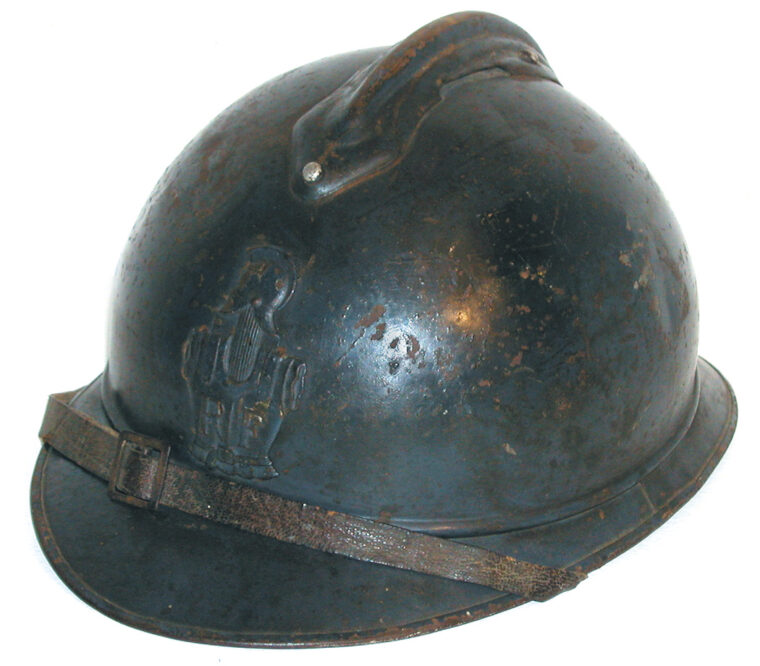
Some French soldiers already wore helmets. These were the First and Second Empire gilded helmets for mounted troops, including cuirassiers and dragoons, and infantry personnel like sappers. Their chromium-plated helmets featured brightly colored feathers and plumes—clearly inappropriate for what World War I was becoming.
The Evolution of the M15 “Adrian” Helmet
The first attempt to provide adequate protection came in the form of small metal plates and bowls that were worn under the traditional uniform kepi. Rumors flew—and still fly—that soldiers even wore soup bowls under their hats to gain protection, but these are probably confused with actual steel skullcaps put into service by General Adrian in 1914. In fact, it is more likely that instead of bowls being used as helmets these uncomfortable metal skullcaps served as bowls for soup.
The fact remained that many fatal head wounds were caused not by bullets or blows to the head but rather by small low-velocity artillery shell fragments. Any protection besides a cloth cap was seen as an improvement; the rush was on to develop a helmet.
In 1915 an official protective helmet was introduced and it has been forever tied to its creator Intendant-General Agust-Louis Adrian, who based the design on helmets used by Parisian firefighters. This inspiration actually resulted in a rather complex helmet comprising several individual stamped pieces riveted or welded together.
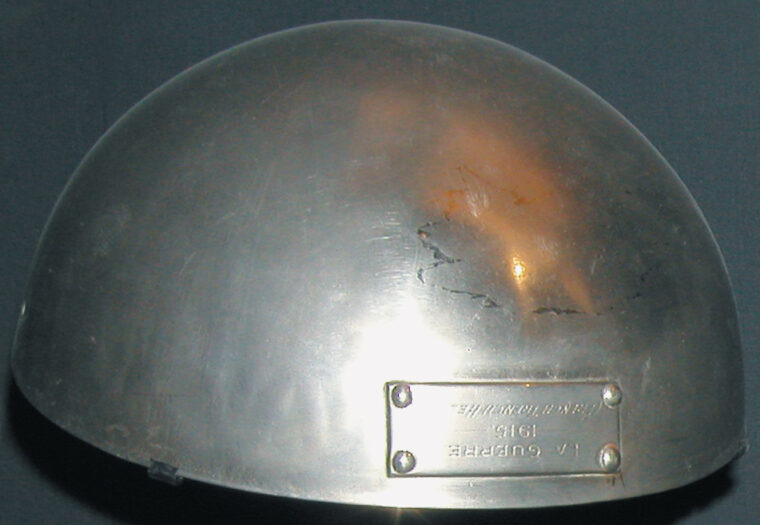
The design comprised an oversized skullcap, a two-piece brim with front and rear visor and a crest over the top serving to cover ventilation holes. The liner varied but usually consisted of a leather band with additional fingers to provide padding held together by a drawstring. This rested on [BENEATH?] a corrugated tin sheet designed to provide both additional ventilation and suspension. A leather chinstrap was attached to a pair of fixed D-rings on either side.
The steel of the M15 was a mere 0.7mm thick, lighter than the contemporary fire helmets, but still provided a great service to the wearer. Five factories began manufacturing the helmets and by the end of 1915 more than three million helmets had been produced.
Colors and Covers of the M15
The M15 “Adrian” was the same gray-blue as the uniform, and beginning in late 1915 the French also introduced a fabric cover in light blue or khaki. Although these were issued in large numbers, few remain today. They were ordered abandoned during the summer of 1916 owing to the belief that scraps of the cloth, which became filthy from trench conditions, might possibly carry into the head wounds and cause serious medical complications for the soldiers. Such covers have been heavily faked over the years.
Later helmets were issued at the factory with a matte gray-blue finish darker than the earlier color. Because of the many helmets introduced during the war, and the fact that paint was not readily available at the front, helmets often appear today in both shades. French Foreign Legionnaires and other colonial troops also used a variety of helmets painted in brown and khaki. The helmets were never painted this way in the factory and should have the more typical color underneath.
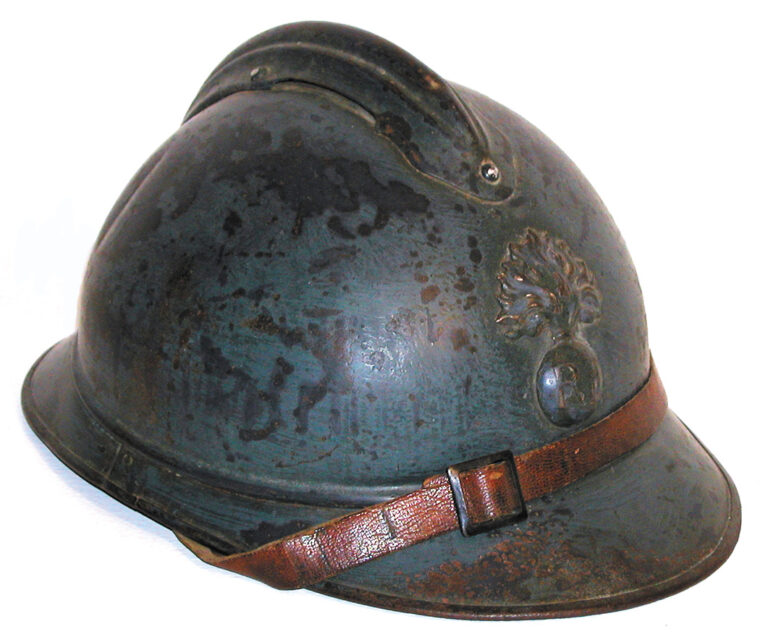
Although not common, some troops took it upon themselves to camouflage their helmets with splashes of brown, green and even black paint. Photographic evidence of this practice exists but few surviving helmets. Any helmet with camouflage patterns should today be considered extremely rare.
Because the Adrian helmets were popular with various Allied nations during and even after the war, they show up in a variety of other colors. The most common is the brown of the Belgian army. The Russians used brownish khaki, the Italians and Romanians a gray-green.
Emblems: “A French Military Fashion Statement”
The M15 Adrian was issued with a metal insignia noting the arm of service. Originally there were nine emblems—stamped metal plates—for the Adrian helmet rising to 12 by the end of the war. Included were a flaming bomb for infantry, crossed cannons for artillery, a First Empire styled helmet and breastplate for engineers, a crescent moon for Zoave regiments, and an anchor for navy. All of these featured the letters “RF” (Republique Francaise) for the French Second Republic, but it is interesting to note that the original designs lacked these letters, which appear to have been a last minute addition. But it is difficult to believe that no emblems were produced without the “RF” letters and most encountered should be treated as “fantasy” items.
Emblem variations exist and collectors are urged to do the appropriate research but it should be stressed that this emblem type was used until 1937 when a new model was introduced. The 1937 type used the same symbols but on a smaller circular base. It is common to see the circular base emblems on Adrians pictured at Internet auctions and at militaria shows, but these should not be considered Great War era helmets.
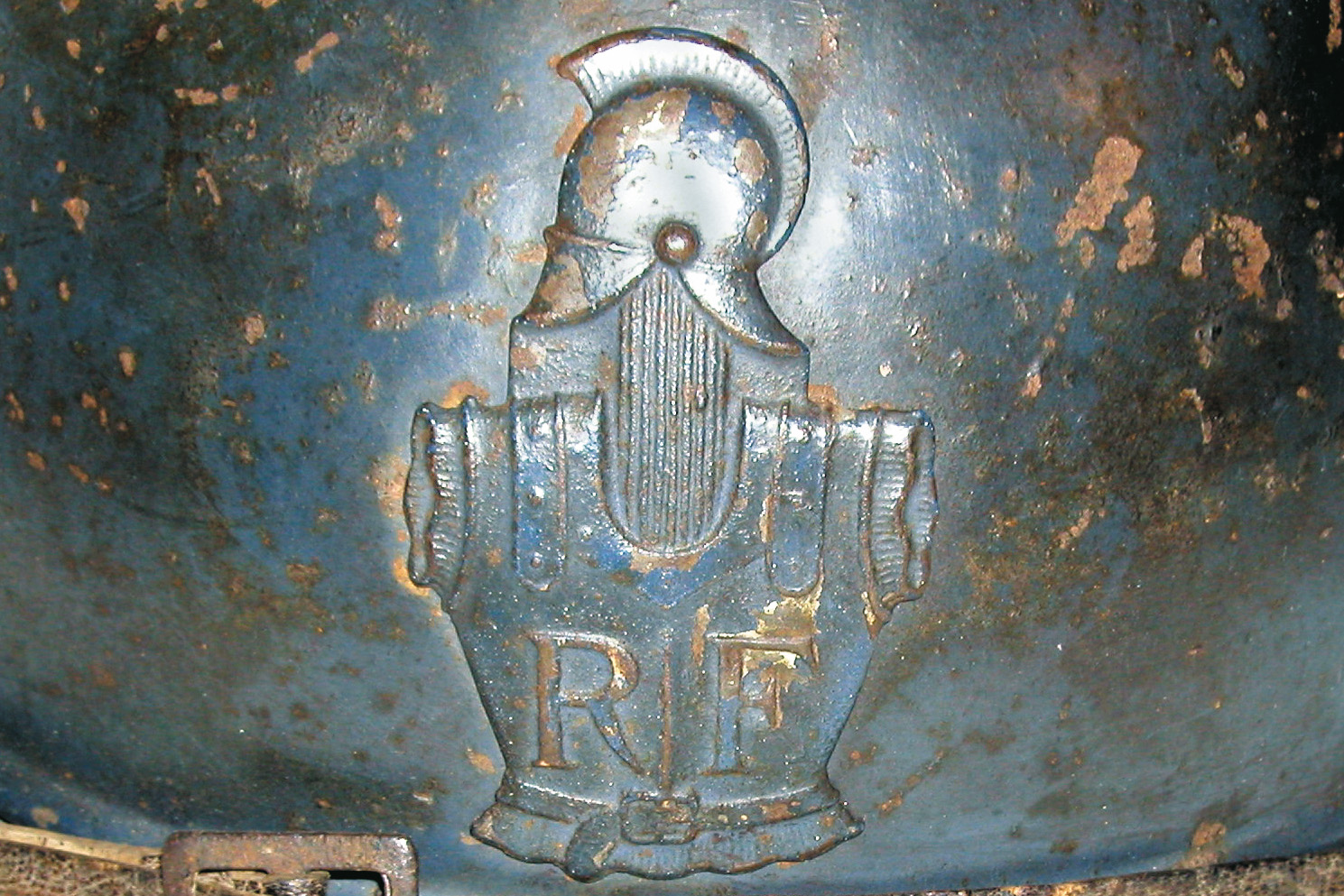
The use of emblems may seem another anachronistic element of the French uniform but they did serve an important role. “Considering the artistic complexity of the standard issue French Adrian helmet, I think it fair to say that putting separate branch insignia on the fronts was indeed a French military fashion statement,” says Dr. Robert Clawson, emeritus professor of European Military Studies at Kent State University and noted military headgear collector. “It certainly didn’t contribute to the effectiveness of the helmet. In fact, it must be said that the helmet itself was greatly admired for the look of the thing, not for its effectiveness.”
In addition to the emblems, French helmets sometimes had painted insignia on the front. While other nations, most notably Italy, used stencils or even rough painted symbols on their helmets, it is extremely rare to find this style of symbol on a true French helmet – so helmets found in this matter should be viewed with suspicion.
But other less conventional items are encountered today, though rarely. These include the use of stars at the front to represent a general—his had a brass chinstrap, too. Helmets like one example displayed in the book Helmets: Combat Helmets of the World by Paolo Marzetti should be viewed as one-of-a-kind items produced for a high-ranking staff officer with visions of another era of warfare and not common by any stretch of the imagination.
A more ordinary, but still unusual item is the gilt brass plate worn over the front visor of an Adrian helmet. Bearing the inscription “Soldat de la grand guerre 1914-1918,” these were presented to veterans in the years following World War I. They are occasionally seen for sale on Internet auctions but, as is the case among other rare items, fakes have begun to surface.
Variants and Experimentation
Many variations and experimental helmets were also used by the French army during World War I. Because of their rarity, and the fact that these are not true “Adrians” it is beyond the scope of this article to include them all but many fakes have cropped up in recent years. Research before making any purchases of these items, because genuine examples of which are extremely exceptional.
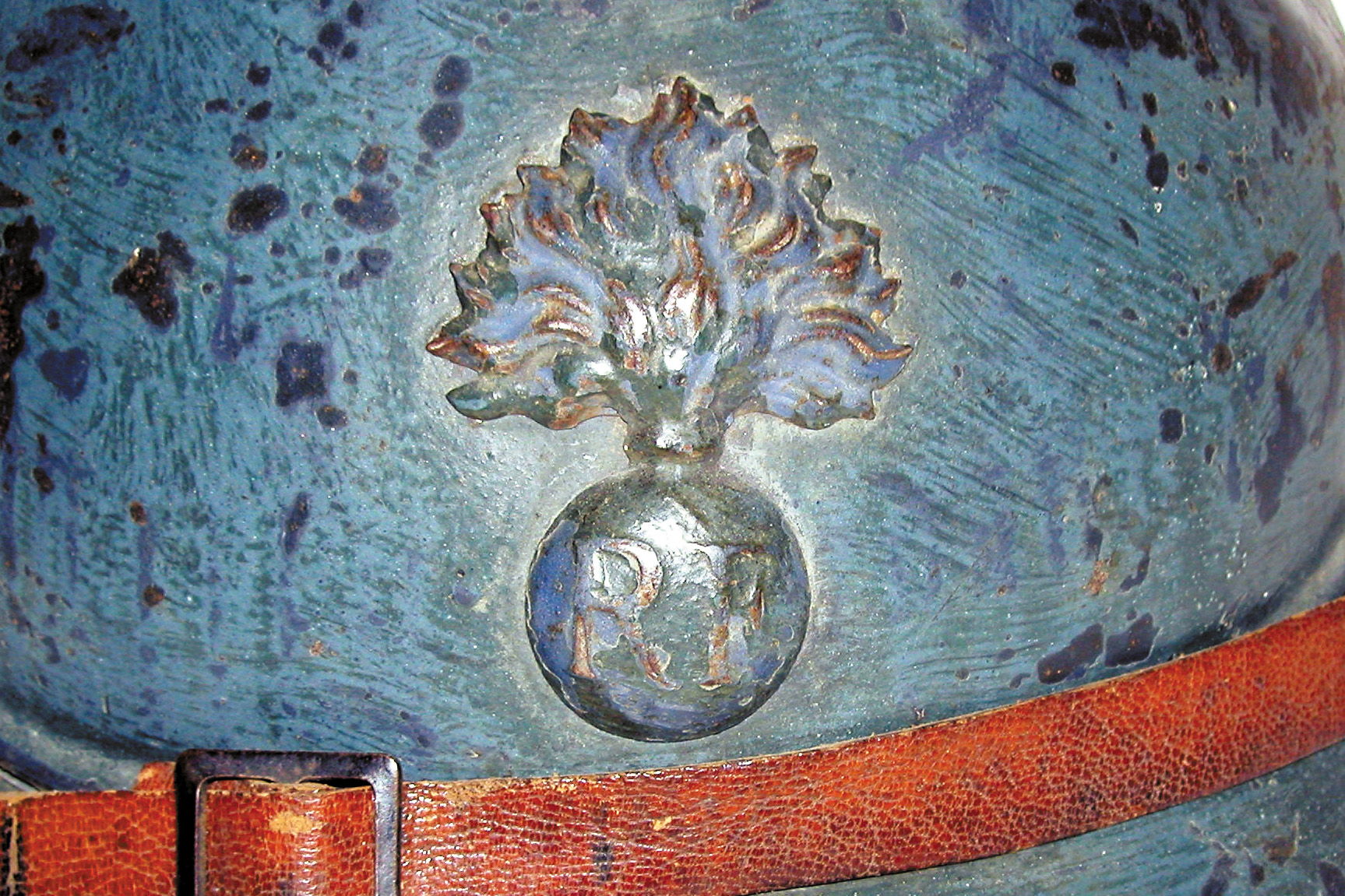
Among the more unusual experimental types are ones featuring a front visor. Throughout the war various attempts were made by the French Bureau of Inventions to offer face protection and most of these were used in conjunction with the Adrian. Major Polack of the French army designed a series of visors, which were attached to the rim of the helmet for eye protection. But because of the added weight and limited benefits these were soon taken out of service.
The Dunand brothers worked independently throughout 1916-1917 and produced a Franco-American helmet that saw limited service in 1918. It was first manufactured in America and then in France. Unlike Polack’s helmet this experimental model did not initially use the basic Adrian design but instead relied on an original design that no doubt limited the production capabilities. A modified version built around the Adrian was also produced. Both designs used a visor with numerous perforations, much like a cooking colander. Additional other varieties of face production were used, including facemasks of chain mail and ones with slotted metal eyepieces. None of these was ever produced in vast numbers and most affected the wearer’s vision. Moreover, it was nearly impossible to wear these helmets with a gas mask; the practical realities of war meant that the basic Adrian would remain the standard helmet of not only the French but also other nations.
A Multinational Helmet
The French M15 became a popular with Russian, Serbian, Romanian and Italian armies and was provided in great numbers to Czech and Polish volunteer forces. Each of these armies used their own unique badge but it is the Belgians who used the helmets in the greatest numbers after the French. Belgian helmets featured the Flanders lion-head crest; the helmet was painted a dark brown to match the Belgian uniform. Additionally African-American troops of the French 157th Division wore the “Adrian” with the French infantry insignia along with their otherwise traditional “American” uniform. Their helmets should not however be confused with other “Adrian” helmets used by American ambulance drivers; these featured an American-flag design as part of the helmet’s badge.
It is worth noting that although the typical French emblems have been rarely faked, those of the other Allied powers are considered less common and thus have been reproduced in greater numbers. The most common of these high-end fakes are those of Imperial Russia; beware.
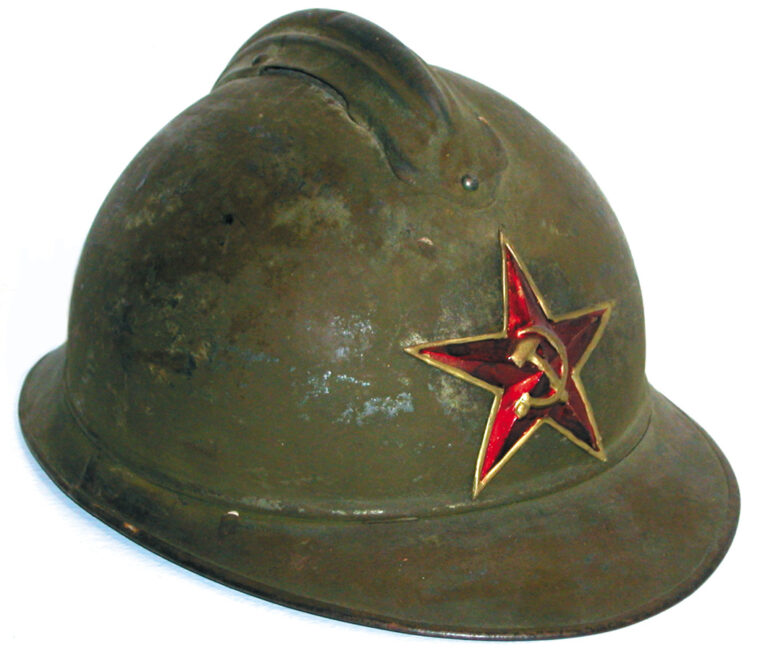
When the Great War ended the influence of the Adrian nevertheless carried throughout Europe and the world. Many nations in the post-war period would adopt the style of helmets of the victorious French army, at least until developing their own unique helmet. The new nations of Poland and Yugoslavia would rely on the Adrians, as would Romania and Italy. Even the fledgling Soviet government would continue to use the captured Adrian helmets (and were believed to have produced their own version domestically) with a tin enameled Red Star throughout the 1920s.
Adrians were modernized slightly and updated in 1926 and in 1937, but like with the outdated equipment of 1914, this new generation of helmet would be ill suited to the needs of combat in 1940.
The M15 as a Collectible
The French M15 has become, like other helmets, a niche collectible. While not possessing the allure of the German steel helmets or pickelhaube (spiked helmets), the Adrians nevertheless evoke images of a bygone day and serve as reminders of the horrific conflict. As the 100th anniversary of the Great War approaches, the M15 helmets have begun to appreciate in value. “French helmets were not considered very good until the last 10 years with the take-off of all things WWI,” emphases Karl Kithier, a militaria collector with more than 25 years of helmet experience. While German items have always been very popular, Karl doesn’t equate popularity with collectibility. “I think Adrian helmets are very collectable,” he says.
Unlike the German helmets, Adrians typically did not return to America as war trophies with returning “Dough Boys.” Rather they were sold off as surplus by the French government when the new model was introduced in 1926. Consequently, it is common to see Adrian helmets with post-World War I liners and maybe a newer coat of paint or two. These possibly saw service in the trenches, and it is unlikely that production runs of the helmet continued in the post-war years—until the 1926 model was introduced—but such helmets are nevertheless viewed as “post-war” by collectors.
But the M15 is still a rather common item. Collectors are advised to look for complete helmets with original liners and chinstraps and free of rust and damage. Helmets in better condition will rise in value while damaged helmets and those missing badges or liners probably won’t be appreciate much owing to the large number still available. As with all military collectibles, the rarer pieces, such as those with the Zoave badges, helmet covers, or with the sand-brown finish should be bought from reputable dealers.
The French M15 helmet was issued in the millions and provided only limited protection to its wearers, but they were better than nothing. Although the German helmet might be the more desirable collectible today it is hard to argue that the Adrian isn’t a very fine looking helmet. And it is a piece of history that belongs in every military headgear collection.
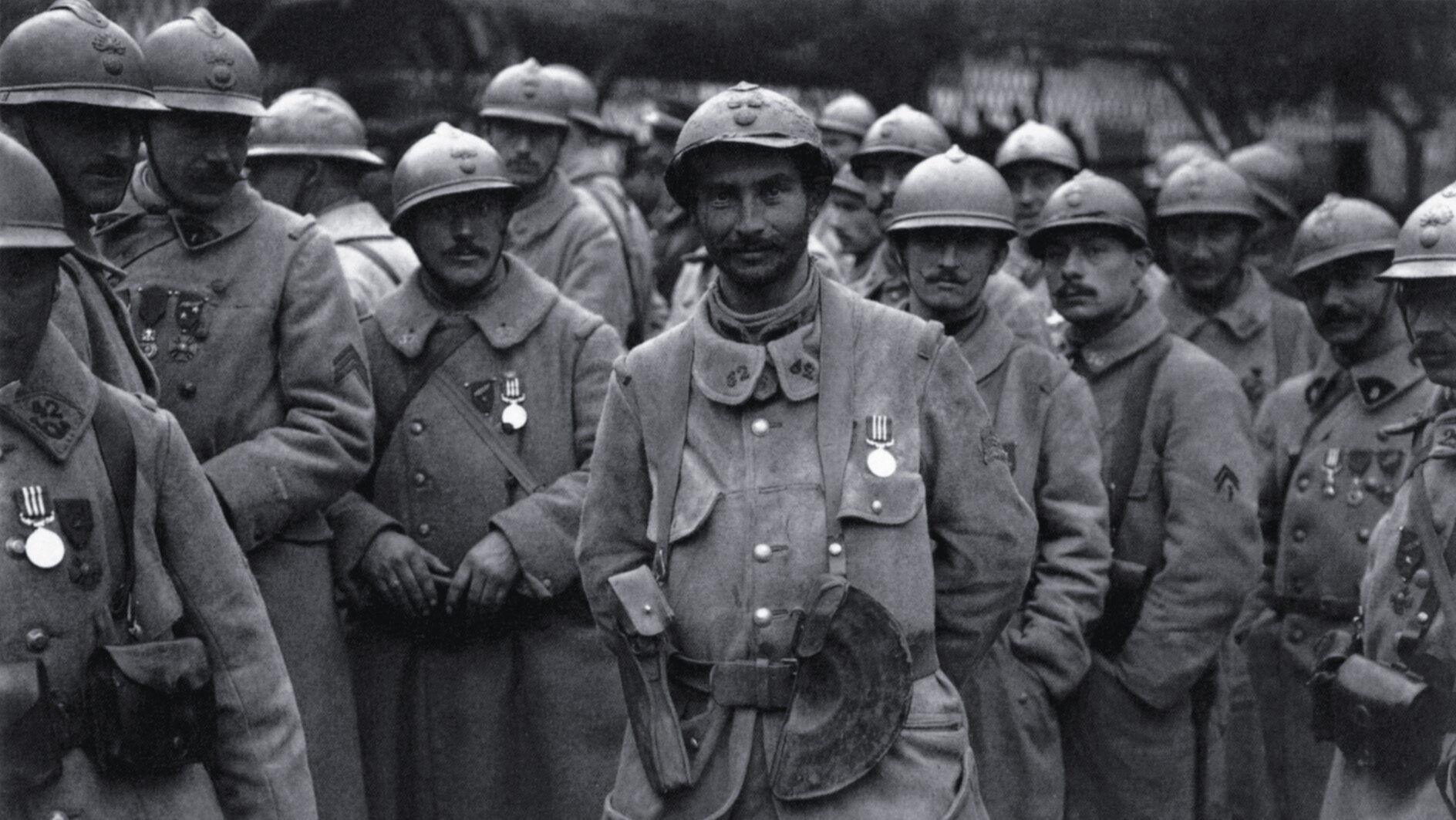
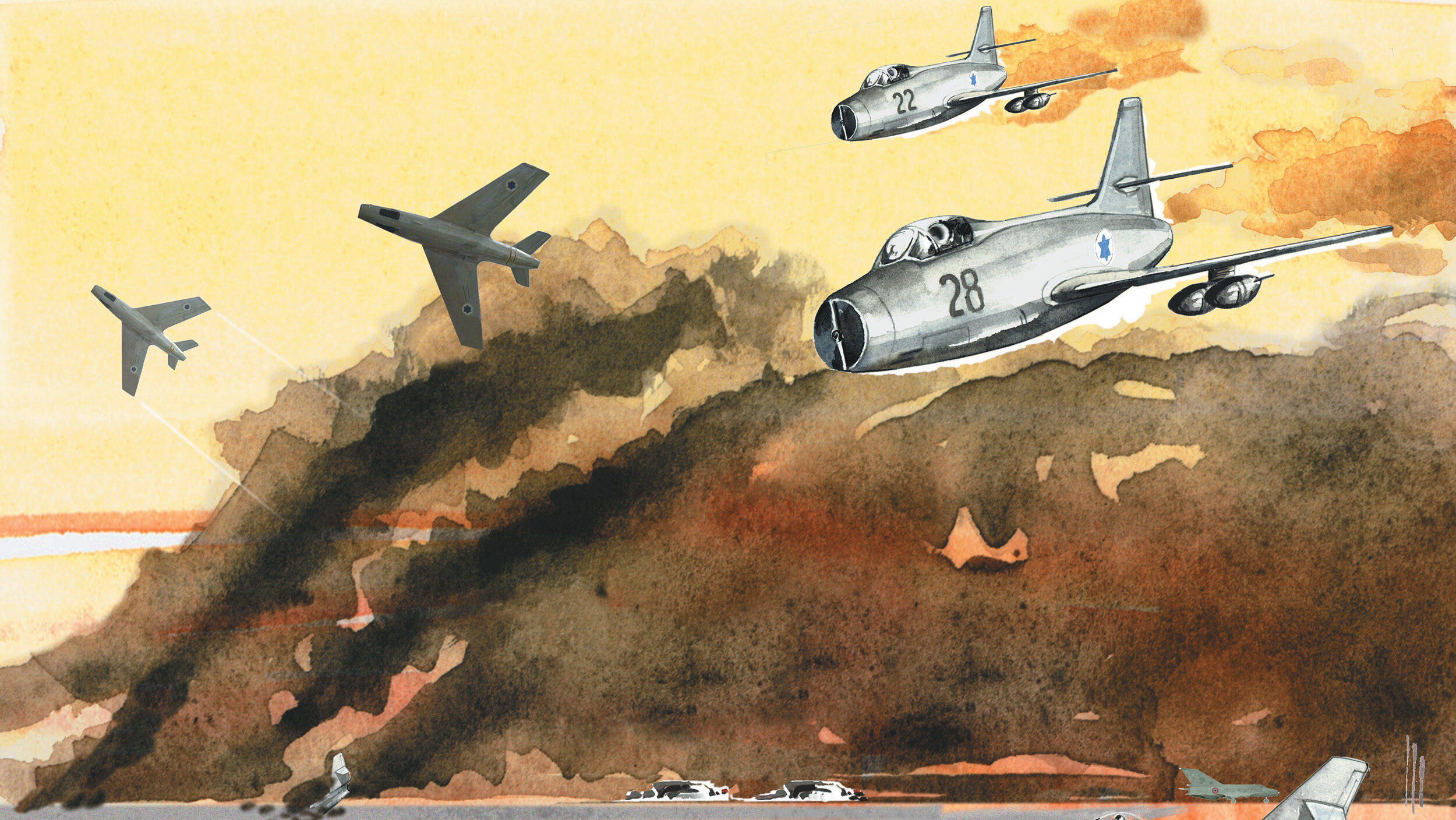

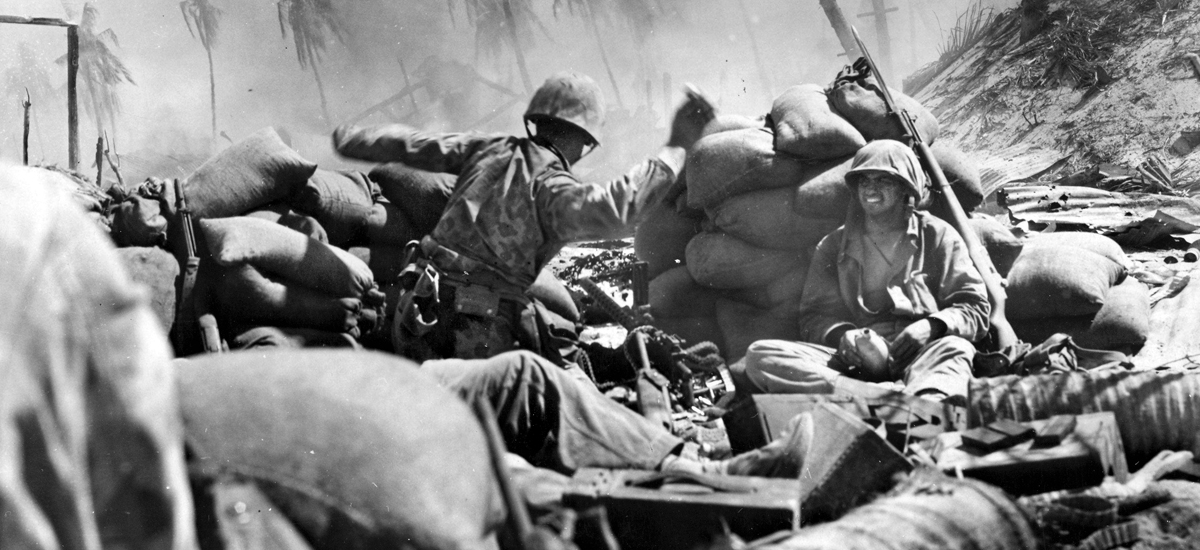
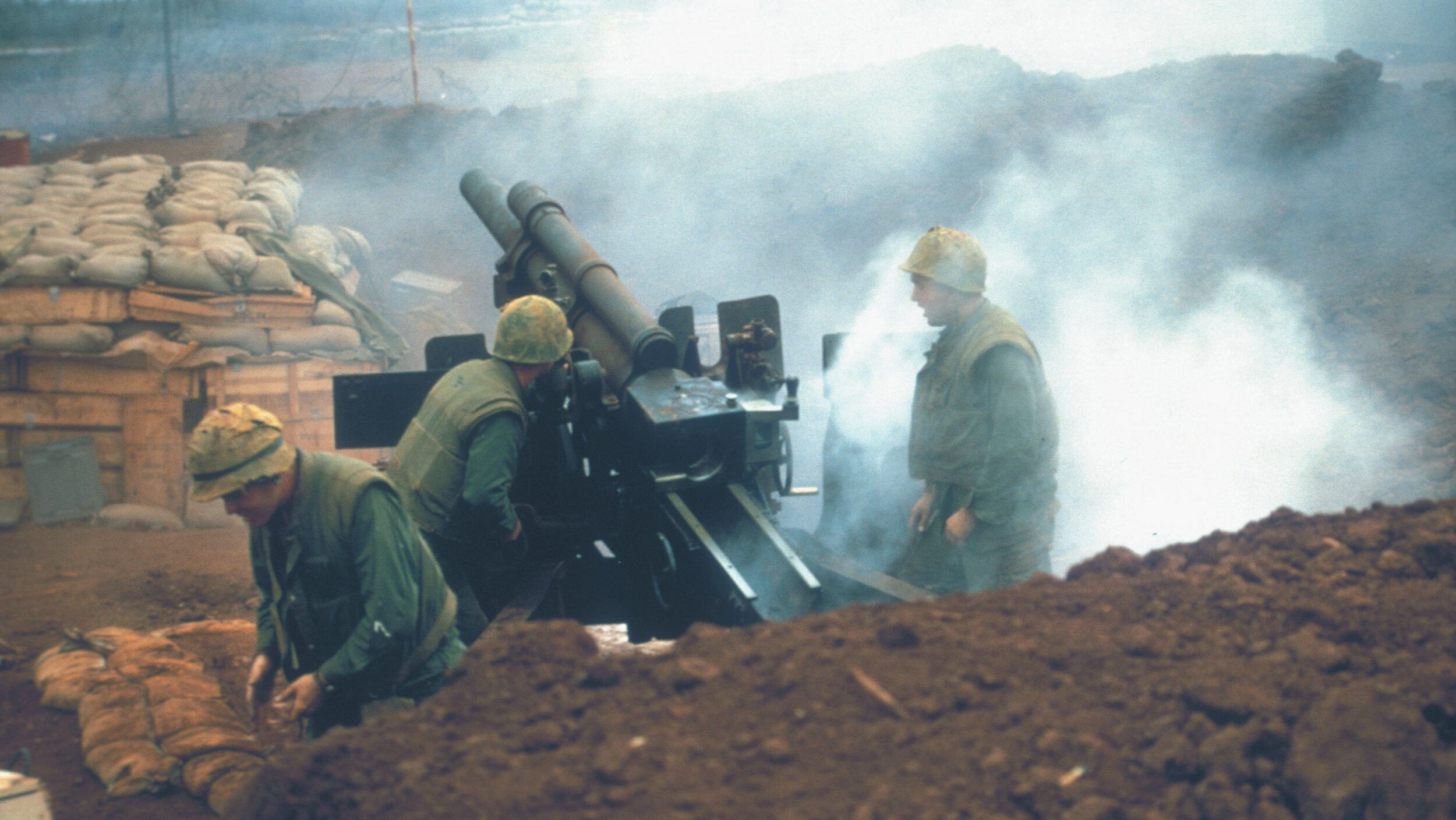

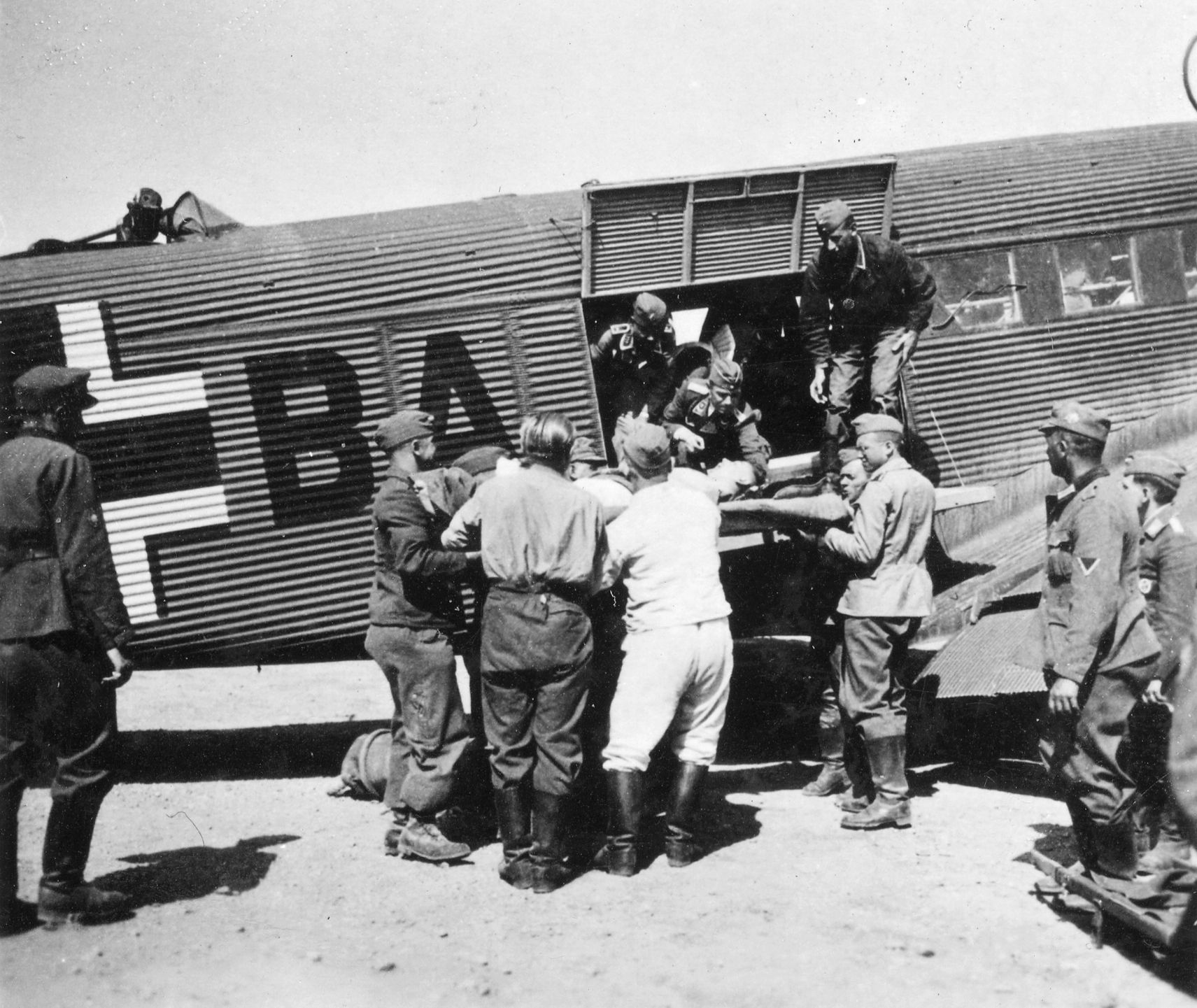
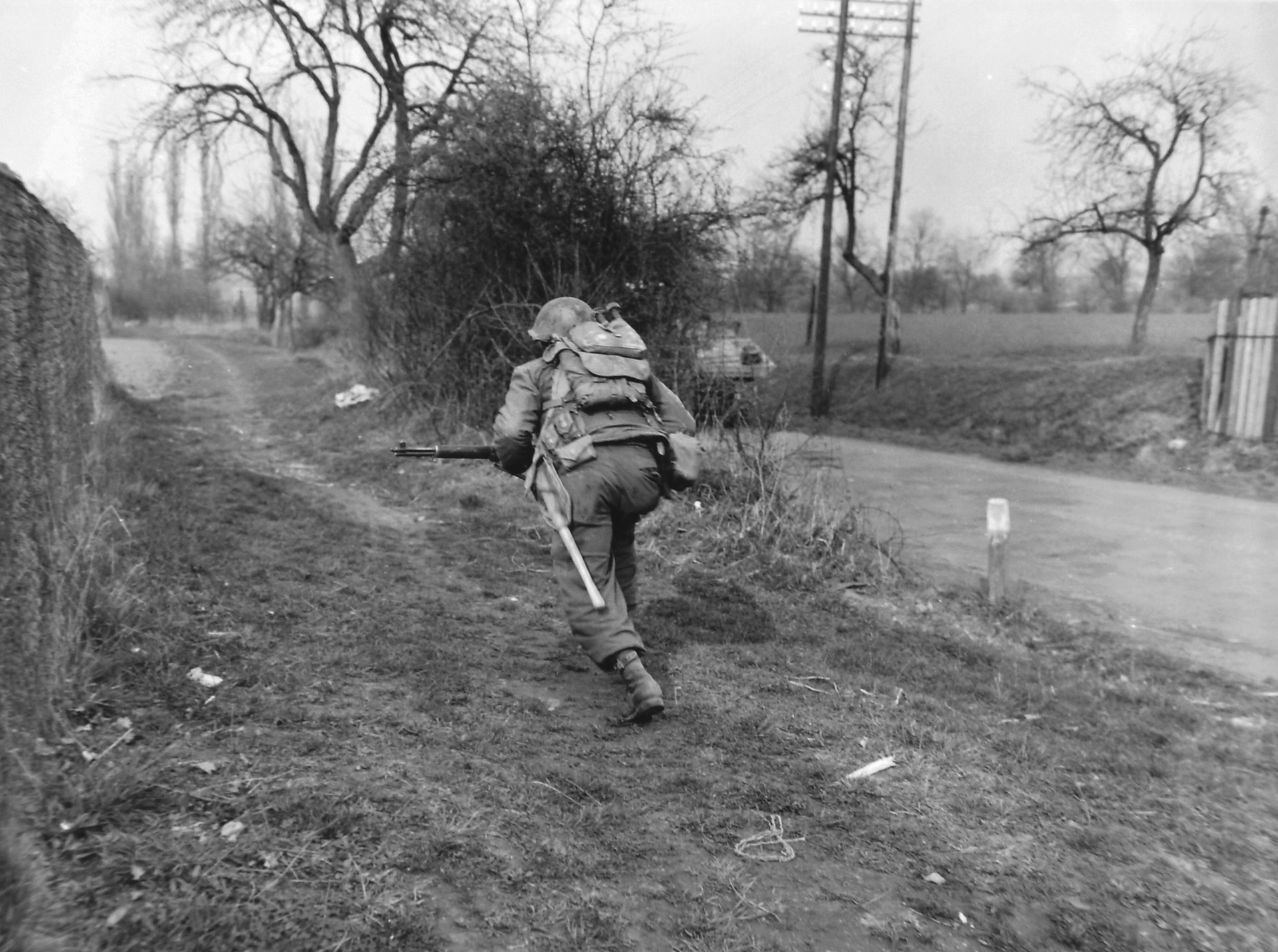
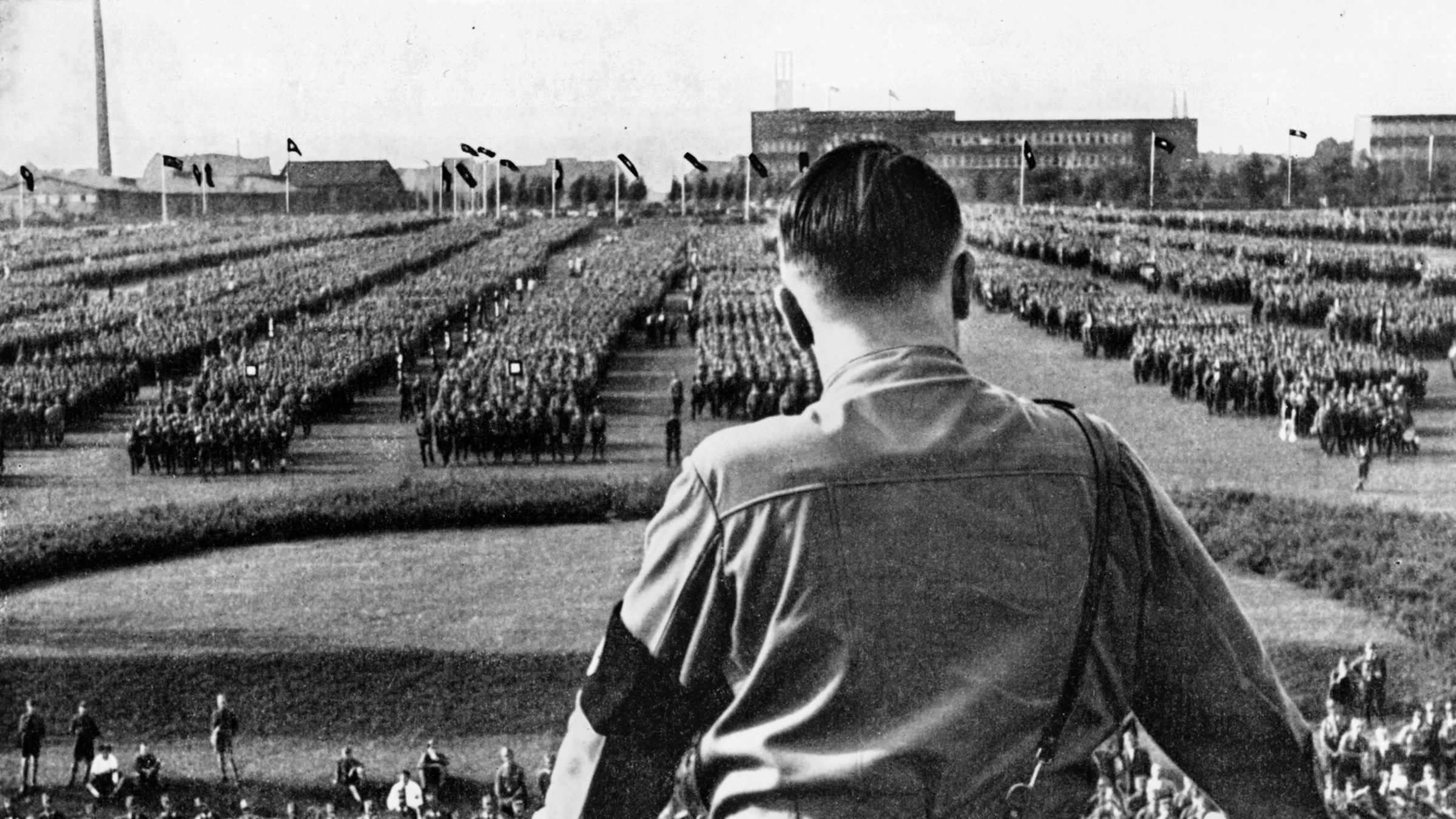
Join The Conversation
Comments
View All Comments